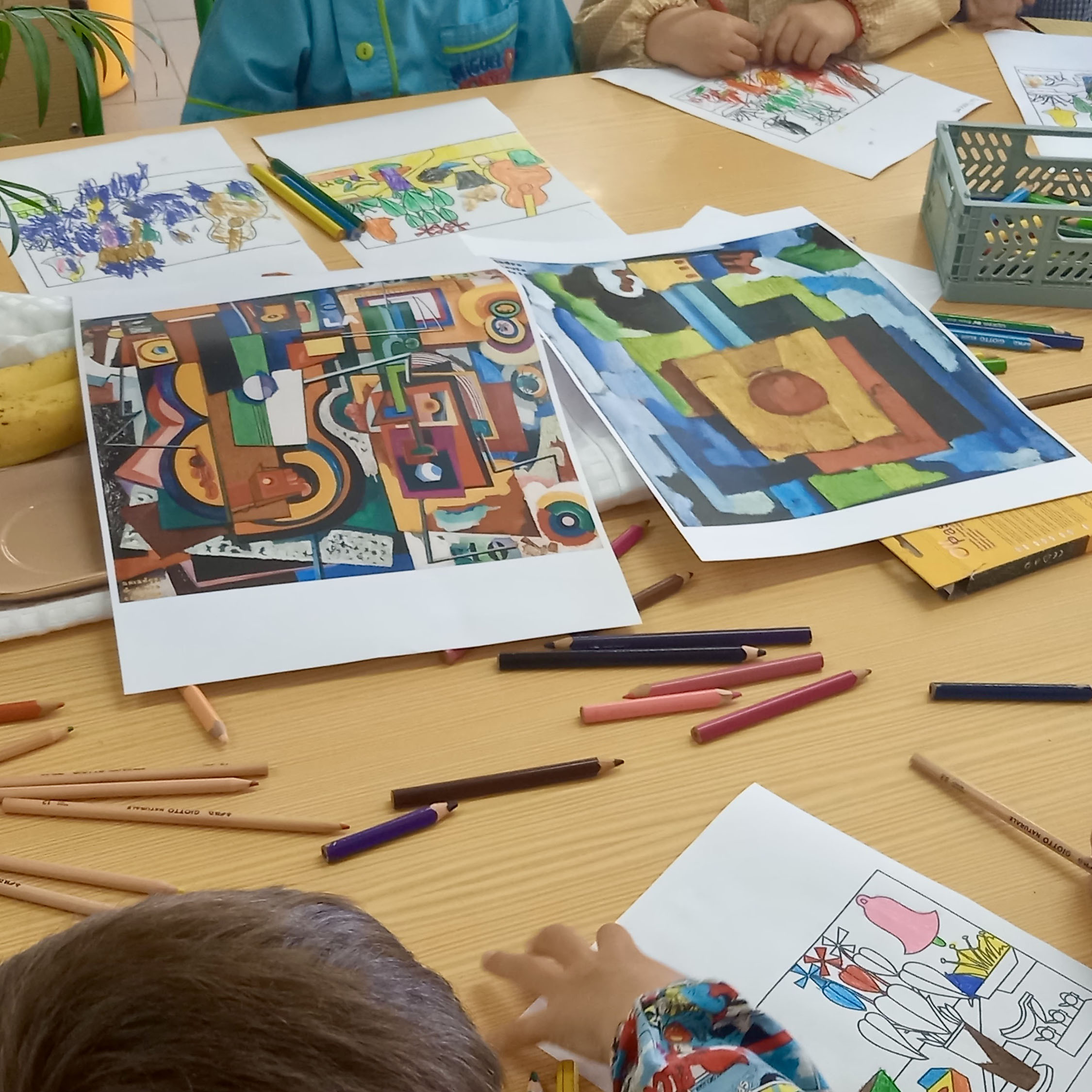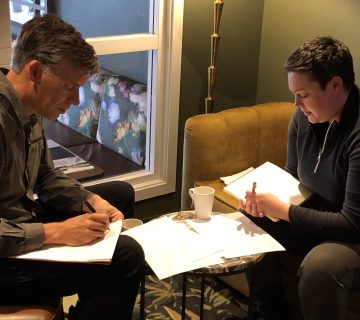An opportunity to use interpretive techniques to bring Portuguese culture to life for our youngest art critics and budding artists.
I was challenged by my youngest son’s pre-school teacher to develop an activity for the class related to the parents’ jobs. As an investigator in History of Art I came up with the idea of carrying out a project involving a Portuguese artist. However, I quickly realised how huge this achievement would be: How could I catch the interest of a group of 24 children, aged three to six, in the painting techniques of abstract art using a work of art? How could I help them understand some of the key concepts and how could I approach their daily artistic practice and language in order to bring them some kind of meaning?
First of all, I chose the topic, the painting of Amadeo de Souza-Cardoso (1887-1918), a modernist Portuguese painter who held a unique style and who was simultaneously the pioneer in the use of certain plastic techniques that influenced the Portuguese painting throughout the 20th century.
Within this topic I offered a short and simple invitation: “Shall we paint like Amadeo?” The main goal was to touch the children’s sensitivity to more abstractionist languages of painting by explaining Amadeo’s basic techniques and to demonstrate that all of them were able to paint in freedom, to pick their own theme and colours and mix the materials as they wished – searching for the Amadeo artist in each one of them.
I selected as the main phenomenon one of Amadeo’s earliest works, a still-life painting, and I posed some open-ended questions about the facts that were present in the picture: sound objects, kitchen objects, fruits and plants. As the children pointed them out I displayed several props similar to those they could see in the picture, materialising the painting before them and in this way offering a tri-dimensional tactile contact with the objects.
The children were encouraged to help me display the objects so that we could create a composition similar to the original and then they put their hands to work by colouring a picture using a variety of materials. As Amadeo used to mix sand and pieces of wood to add texture to his colours, I kept a surprise element: in three jars that were used for the reconstruction of the painting (in the bottom right corner) I put some sand and pieces of wood that the children could touch and integrate into their works.
After the first phenomenon I showed the picture of some later works by Amadeo with elements that were similar to the first one, but now transformed: incomplete and more cubic-shaped musical instruments, more contrasting and vivid colours – thus showing the artist’s evolution into more modernistic languages. The interpretation was an essential tool to the development of this activity, giving way to a guiding thread in the communication techniques and interference management.
The children were extremely open-minded to this interpretive talk and the final results were very positive and even surprising. They were able to understand that my job involves the study of works of art and artists and… who knows? Maybe this seed might someday sprout in some of these children? Yes, heritage interpretation can happen in the kindergarten!
Ana Tavares studied Music Composition and History of the Arts and spent the last ten years teaching at artistic schools. She recently paused the teaching job and is a full-time PhD student in Heritage Studies at the University of Porto, Portugal. She loves art, travels, walking by the sea and playing with her children. She seeks to learn something new every day. Ana can be contacted at: ana.ester.azevedo@gmail.com.
To cite this article: Tavares, Ana (2023) ‘Can heritage interpretation reach the kindergarten?’ in Interpret Europe Newsletter 1-2023, pg. 19.
Available online: https://interpret-europe.net/wp-content/uploads/2023/03/PDF-Newsletter-2023_1-spring.pdf




